Laser fever
Until recently, the role of a laser for the most part was limited to the provision of range data and illumination, marking and designation of targets for semi-active homing or course correction of missiles induced along the beam. In addition, lasers have been successfully used as blinding devices, in a number of applications with remote fuses, as well as in systems of controlled counteraction to infrared weapons against infrared-guided missiles.
Protection against lasers can be provided by sensors capable of detecting, identifying and locating the source, by means of obstructing observation, thereby preventing the collection of information, and, finally, by filters that prevent damage to optical systems, including the human eye. Currently, high power laser systems or high energy lasers (English, HEL - High Energy Laser), capable of destroying targets such as small Drones both projectiles and damage to larger systems are on the verge of mass operational deployment, and developers and planners should already think carefully about how to counter them.
Undoubtedly, the United States implements most of the programs on lasers, but Russia, China, Germany, Israel and the United Kingdom are also working on similar systems, and according to the Congressional analytical service, the United States is unlikely to have a clear advantage here.
Marine systems
In the early stages, most of the operational use of lasers on board warships will most likely be reduced to combating UAVs, unmanned boats and high-speed combat boats, which will require systems of relatively low power. Knocking down anti-ship missiles and even aircraft will require more powerful weapons class 150 kW.
The US Navy, the most enthusiastic supporter of this technology, is financing several laser weapons systems under one large SNLWS (Surface Navy Laser Weapon System) program. In March, Lockheed Martin's 2018 was awarded a contract for the first system or first phase. Under this 150 million-dollar contract, she will design, manufacture and supply two high-energy lasers with a High Energy Laser and Integrated Optical-dazzler with Surveillance Optical-blinding HELIOS device, one for installation on an Arleigh Burke class destroyer and one for testing on the shore. The contract also provides for an option for HELIOS 14 systems. Upon successful completion of the tests, these options will increase the value of the contracts to about 943 millions.
"The HELIOS program is the first of its kind, it combines laser weapons, long-distance reconnaissance and surveillance, and antidroning capabilities into a single whole, which will dramatically increase the level of control of the situation and increase the layered defense options available to the US Navy," and sensors.
The HELIOS program includes a fiber optic 60 kW laser for combatting UAVs and small boats, a sensing long-range reconnaissance and surveillance system integrated with the ship's Aegis combat control system, and a low-power blinding laser for disrupting the operation of enemy UAVs. The primary laser is reported to have growth potential up to 150 kW.
As part of the first phase, Lockheed Martin will deliver two HELIOS systems for testing by 2020, one for installation on the Arleigh Burke class destroyer and one for testing on land at the White Sands test site.
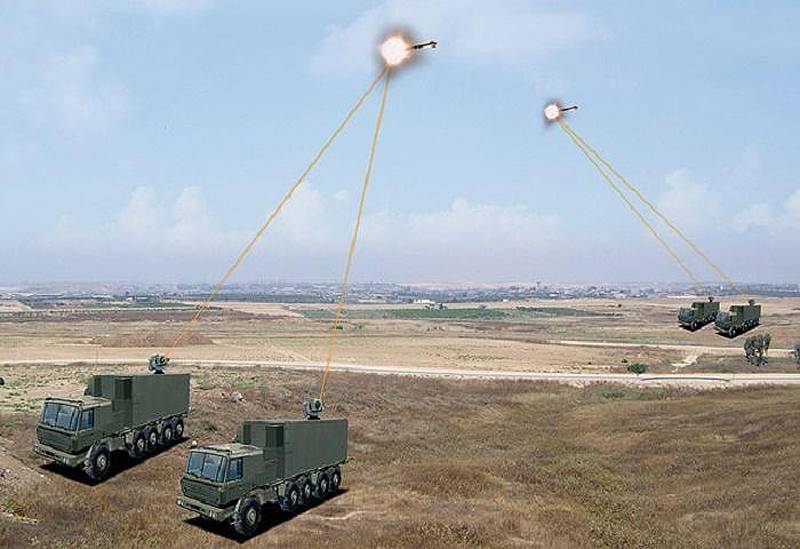
Dazzling odin
The second system is a low-power laser ODIN (Optical Dazzling Interdictor, Navy - optical dazzling device, for fleet), designed to dazzle and disable UAV sensors. According to the U.S. Navy, the main components of the ODIN system include a beam-guiding device, which in turn includes a telescopic subsystem and low-inertia mirrors, two laser emitters and a set of sensors for coarse and accurate aiming at the target and, as in HELIOS, for reconnaissance and surveillance.
The third system, known under the designation SSL-TM (Solid-State Laser-Technology Maturation), is a more powerful development of the Laser Weapon System (LaWS) program, in accordance with which the 30-kW laser was installed to evaluate landing ship San Antiono. In the 2015 year, under the SSL-TM program, Northrop Grumman was selected to develop an 150 kW weapon that will be installed on a San Antonio class vessel during the 2019 year.
Current plans include the development of technology to support the second phase of SNLWS and the further development of the HELIOS subprogram. The third phase of the SNLWS project is also planned, and the power of the laser weapon will be further increased.
The fourth system, designated RHEL (Ruggedised High Energy Laser), is also in preparation. The initial power is also 150 kW, but it will implement a different architecture that can handle more power in the future. The US Navy in 2019 is planning to spend about 300 million dollars on these weapons systems.
Experienced vehicle systems
The prototype of the Lockheed Martin Athena portable ground-based laser has confirmed its ability to shoot down small drones. The company published a video in which the laser shoots down five drones in a row, each time aiming at the vertical tail of the vehicles.
When capturing a UAV or a small boat, the operator visually makes sure that the object is enemy and selects the aiming point using an accurate infrared sensor. According to the company, for fast-moving targets, such as rockets and mines, the Athena system operates independently without an operator in the control loop. Although Athena is still a prototype, the company claims that the hardened version will be suitable for combat use.
The system uses the ALADIN (Accelerated Laser Demonstration Initiative) fiber-optic laser with a power of Lockheed Martin 30 kW. In the ALADIN system, several laser modules work together, this configuration makes it relatively easy to scale the power of the weapon to higher values.
Another system, this time being developed for the American army, performed well on the Maneuver Fires Integrated Experiments (MFIX) army exercises, conducted at the beginning of 2018. This weapon system received the designation MEHEL (Mobile Experimental High Energy Laser). It is a Boeing 5 kW laser machine installed on a Stryker 8x8 armored vehicle. The MEHEL system confirmed its ability during the MFIX exercises to shoot down small-sized helicopters and aircraft-type drones above and below the horizon, and also successfully hit ground targets.
The system of laser weapons MEHEL US Army is designed for installation on a combat platform. It uses a commercial fiber laser, potentially capable of generating 10 kW power. It is induced by means of a beam control system consisting of a telescopic optical system with an aperture of 10 cm and a stabilized high-precision guidance and tracking system. Capture and tracking of the target is provided by infrared cameras with wide and narrow fields of view and a Ku range radar.
In August, 2014, the company Raytheon and the United States Marine Corps (ILC) began testing the HEL system for installation on small tactical Corps machines to combat low-flying drones and similar targets as part of the Directed Energy On-the-Move Future Naval Capabilities program. Back in 2010, the prototype of the system, in demonstration tests, managed to knock down four drones.
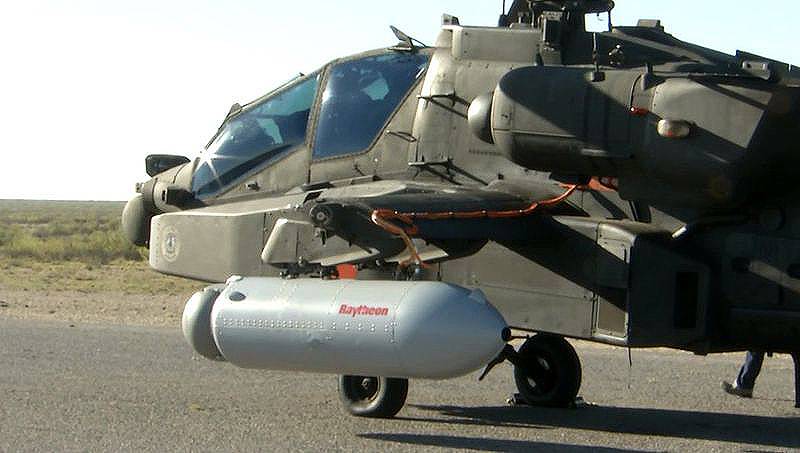
According to Raytheon, the main technology in such a compact weapon is a planar wave-guide (PWG). “Using one PWG, similar in size and shape to the 50-cm line, high-energy lasers generate sufficient power to effectively defeat small-sized aviation».
In the short term, it is possible to deploy such a platform in the form of a promising ground defense system GBADS FWS (Ground Based Defense, Future Weapon System), developed by the ILC. A radar-induced laser mounted on an armored JLTV (Joint Light Tactical Vehicle) laser can complement the EW system and Stinger missiles.
The German company Rheinmetall has done a lot of work to develop a number of laser weapons systems and operational concepts for ground defense, slow and low-flying targets, intercept unguided missiles, artillery shells and mines, neutralize explosive objects and have scalable non-lethal impact on a number of threats from operational-appropriate range lasers power 10, 20, 20 and 50 kW installed for demonstration purposes on vehicles, including tracked and wheeled armored vehicles and a truck.
The company has put a lot of effort into integrating lasers into its well-known air defense systems, while emphasizing that, at least in the short and medium term, they will rather complement cannons and missiles rather than replace them. One of the key developments of the company Rheinmetall is the combination of rays. This technology allows you to concentrate the energy of several lasers on a single target, which makes it possible for the entire system to focus on the most threatening mortar mine, missile, cruise missile or attack aircraft, and then move on to the next target; these capabilities were demonstrated to the public in 2013. A fully working HEL system can be developed in the next ten years.
Israel also invests heavily in this technology. Rafael Advanced Defense Systems has developed a HEL prototype, called the Iron beam, which uses a 10 kW fiber laser, but expandable to "hundreds of kW" to fight the BLA, as well as short-range missiles and mines. According to the company, the Iron Beam system consists of two laser systems on two different trucks to intercept a single rocket, and it is noted that several rays can be used for larger targets. The message indicates that the system may be ready for 2020 year.
The smaller Drone Dome system is designed to detect and disable small-sized copters by radio frequency jamming; it may also include a laser with a power of 5 kW, capable of shooting down similar targets at ranges up to 2 km.
Chinese and Russian lasers
China is actively developing mobile systems on trucks and tactical platforms. Chinese companies, including Poly Technologies with their Silent Hunter and Guorong-I, willingly show them at trade shows and upload video tests to the network. For example, a video was shown in which the Guorong-I system burns through a test plate carried by a small quadcopter, possibly from the DJI Phantom line, and then knocks down the drone itself.
It is assumed that China is also working on larger ship systems, possibly installed on the new 055 Tour cruiser.
The Russian military claim that they already have laser weapons in service. Yury Borisov, currently the Deputy Chairman of the Government of the Russian Federation, stated back in 2016 that these were not experimental samples, but combat weapons.
It is assumed that Russia is developing a number of laser systems and other weapons of directed energy, laser systems for protection against aircraft. Reportedly, it is planned to install a higher-power laser on sixth-generation combat aircraft, which, according to experts, will not be commissioned before the 2030s.
Air applications
Although ships, by their very nature, became the first mobile platforms for installing high-powered laser weapons, since they could take a large mass and provide the necessary amount of electricity, the process of practical penetration of laser systems into the field of tactical aviation has now begun.
In the summer of 2017, the first tests of a fully integrated high-energy laser were carried out, during which a ground target was burned from an Apache helicopter. In a series of test captures carried out by Raytheon and the US Army in cooperation with the command of special operations forces at the White Sands range, the helicopter reportedly hit targets from various heights at different speeds, in different flight modes and at an inclined range of 1,4 km.
In order to provide information on the target, improve situational awareness and control the beam, Raytheon has adapted a version of its MTS optical multispectral Targeting System.
An important part of the test was determining how well the technology withstands external influences, including vibration, jets and rotor dust, in order to take this into account when developing advanced weapons.
Jet aircraft lasers
The US Air Force is exploring the possibility of using HEL technology to protect tactical aircraft from air-to-air or surface-to-air missiles under the Shield program (Self-protect High Energy Laser Demonstrator), in connection with which in In November 2017, the US Air Force Research Laboratory awarded Lockheed Martin a contract for a container system that is to be tested on a jet fighter by 2021. One of the design goals is to assemble a multi-kilowatt fiber laser in a limited available space. The work is focused on three subsystems. The first received the designation STRAFE (SHiELD Turret Research in Aero Effects) and is a beam steering system; the second subsystem LPRD (Laser Pod Research & Development) is a container that will house the laser, power supply and cooling systems; and the third is the LANCE (Laser Advancements for Next-generation Compact Environments) laser installation itself.
British dragonfire
If all goes according to plan, the first tests of Dragonfre, an HEL prototype being developed for the British government by a consortium led by MBDA, which included Oinetiq, Leonardo-Finmeccanica and several British companies, including GKN, Arke, BAE Systems, will be conducted in 2019. and Marshall AOG. The planned demonstration should include a full cycle of tests at land and sea ranges, from capturing the target to its destruction.
The armament system will be based on a scalable fiber laser architecture with coherent beam technology and an appropriate phase adjustment system. According to the company QinetiQ, this technology allows you to create a source of high-precision laser radiation, which can be directed to a moving target and generate a high energy density on it despite atmospheric turbulence, which reduces the time of defeat and increases the range. The scalable architecture of Dragonfre allows you to increase the number of laser channels so that the options created can be configured to deal with a wide variety of circuits and integrate into various sea, land and aerial platforms.
Protection from light technology
Lasers as weapons have positive and negative sides. The beam moves at the speed of light, so there are no significant difficulties with the flight time that adversely affect the aiming process. If the subsystem of support of the armament complex can be kept on the target, then it can direct the laser beam on it and keep its necessary time. Keeping the beam on the target is very important, because in many cases the system may need some time to heat the target and provide the desired effect. In this case, the target gets a chance to “feel” the attack and use appropriate countermeasures. The atmosphere itself also creates problems, since phenomena that impede the passage of a beam, including water vapor, precipitation, dust, and air itself (for example, such a phenomenon as a haze), have a different absorbing and refracting effect at different wavelengths, adversely affecting the effective the range of the laser and its ability to concentrate energy on the target.
Naturally, the US military is looking for ways to protect their property from lasers and other directed energy weapons. The Research and Development Administration of the Naval Forces implements a large program for countering directed energy weapons. It examines possible countermeasures based on technologies that may be available to combat such threats from 2020 to 2025 a year, including materials and various types of curtains.
Protective materials, for example, may include reflective and ablative or decaying coatings. Destructive coatings, usually based on polymers and metals, are usually used in solid-fuel space engines and return vehicles. In curtains or obstructions, water or smoke is usually used to scatter the laser beam and reduce the amount of energy that has reached the target.
Other countermeasures begin to appear that, by the principle of active jamming, disrupt the operation of the laser system and do not allow it to keep the beam on the target, for example, using lasers on board the protected platform. This direction, according to some information, was handled by Adsys Controls. However, the company is currently describing its Helios system as a “passive system to counter directed energy weapons,” but without explicit mention of lasers. According to Adsys. The Helios system, which is a sensor set mounted on large drones, provides a complete analysis of the incoming beam, including its localization and intensity. “With this information, she passively suppresses the enemy, protecting the machine and its payload.”
Information on countermeasures to laser weapons is carefully guarded, but one thing is clear: a new technological battle has begun between means of influence and countermeasures.
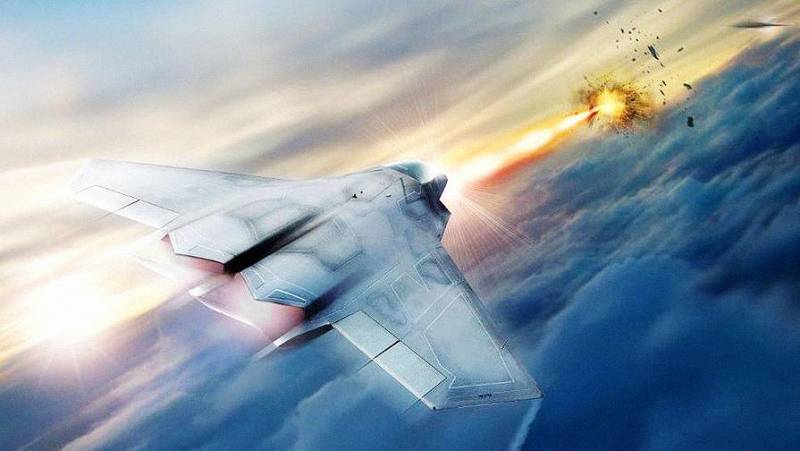
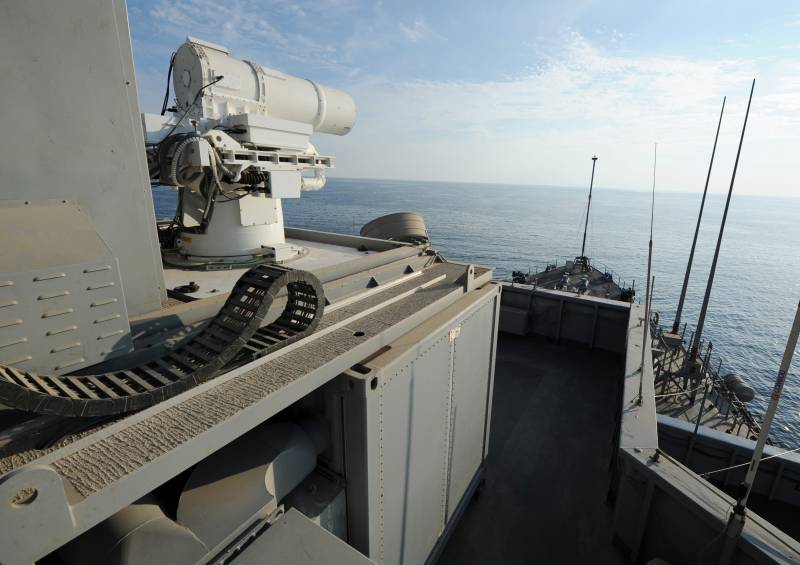
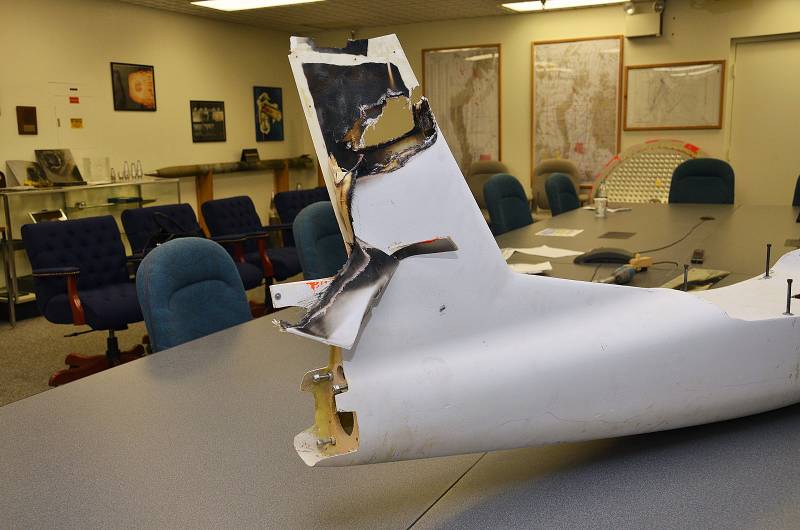
Information